
Better Living with Star Wars

Limericks about James Joyce and Ulysses
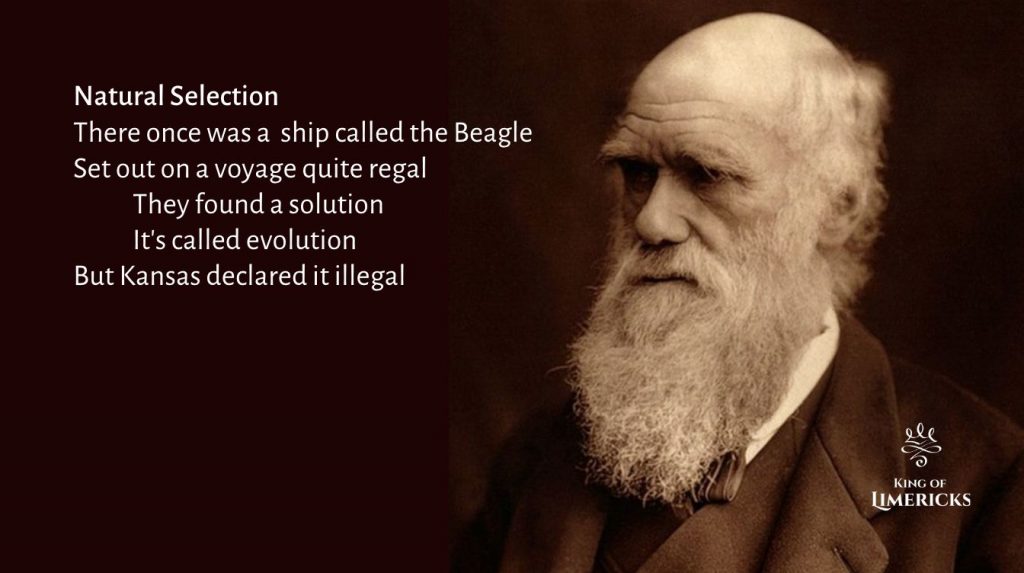
Nobody knows who wrote the first limerick, or why it’s named after a town in Ireland. And most people couldn’t give the technical definition of a limerick. But we all know one when we hear one.
What is it?
A lim’rick’s not hard to define
But it needs to do more than just rhyme
It’s the meter that matters
The pitters and patters
If not you’re just wasting my time
What exactly is a limerick?
So there are a few distinct features that make a limerick a limerick. First of all, we know it has five lines. Then we have the rhyme scheme, which goes AABBA. The first, second and fifth lines all rhyme together. The third and fourth lines, which are shorter, also rhyme together. In the example above I rhymed define with time, which most poets consider perfectly acceptable. A staunch stickler might object to the imperfect rhyme, but then, there’s a reason why we use the expression “poetic license”.
But what really gives the limerick its gallop is the meter. In poetry circles, we normally refer to it as anapest meter. That means two short syllables followed by a long one. You can produce the same effect using amphibrachs (a long syllable in between two shorts) or dactyls (a long syllable followed by two short).
This is where I become the stickler, and it’s what makes writing limericks a bit trickier than you might think. Indeed, it’s where novice limerick writers always get tripped up. Take a closer look at the limericks in this article and listen for where the accents fall. As you get used to it, you’ll get better at writing limericks, and also at reading them aloud.
The twist
Another element often associated with the limerick is its propensity for the perverse. That and the double-entendre surprise endings are what some people really love about a good old-fashioned limerick. To include such witty punning on top of the already rigid structure of rhyme and meter requires true mastery.
Now as I’ve discovered from my years of limerick writing, it’s not as hard as it seems, if you stick to the lewd and licentious subject matter. There is such a profusion of expressions and euphemisms for beating around the bush, if you get my meaning, that many of us even stumble upon them accidentally, in those classic Freudian slips.
In fact, I have a collection of unsavory limericks, which I keep tightly concealed, for fear of ostracism by the army of the politically correct. But here’s a singular example that’s not excessively off-color. If you’re interested in more, you might try contacting me. You never know, you might catch me in a good mood.
Bon Mollie
There’s a lass who could rhyme with extravagance
Convinced me to give up on abstinence
Her clever word play
It led me astray
But oh what a fine piece of assonance
The thing is, most of my limericks focus on more high-brow topics of literature, philosophy and eastern mysticism. Managing to twist a double entendre into these esoteric verses is nearly impossible, but once in a while I get lucky. Here’s one such example, an uncommon marriage of the sacred and the profane.
Paradise Found
Give thanks to your woman and show her you care
Remember when Eve offered Adam her pear?
Whatever they lost
It was well worth the cost
For there’s nothing as sweet as a breast of flesh air
Where did the limerick come from?
As I said earlier, no one really knows who wrote the first limerick. As they bear the name of an Irish town, we typically associate limericks with Celtic knots, four-leaf clovers, and, well, Ireland. It’s true, George Bernard Shaw and James Joyce (both Irishmen) were known to be more than a little fond of the form. But is it really Irish? Who knows.
(For a more in-depth discussion, check out Edward Lear and the mysterious origins of Limericks.)
The earliest limericks seem to have appeared in England sometime in the 18th century. But it was under the aegis of Edward Lear (an Englishman) that the limerick really started picking up steam in the 19th century. Although he popularized the form, I think you’ll find — and I’m sorry to say this — that if you read any of his contributions, they generally fall pretty short of the mark. Even so, as an obsessive limericist, I must pay my respects.
Edward Lear
There’s a poet who hails not from here
With a penchant for bending your ear
The form he exported
Was carefully worded
The grand master minstrel Ed Lear
How do I write a limerick?
The best way to write a limerick is by practicing. Write early and often, and gradually they will get better. I don’t have a foolproof formula to crank out flawless limericks. If I did, all my limericks would be flawless. Which they are not. But I do have a few techniques that generally work.
METHOD 1:
Because the rhyming is so essential to the limerick, one way to start a limerick is to come up with three words that rhyme. Maybe you already have a theme in mind, or maybe your three words will determine the theme. Either way, once you have three rhyming words, you have to find a way to connect them. How are they interrelated? What story can they tell together? Think on that for a while, and if you still come up empty-handed, you may have to switch up the words.
Now that you have three words that rhyme and can be linked together, you just have to tell the story. Do it with a small number of words, and keep it all in anapest meter. da-DAH-da da-DAH-da da-DAH-da, or da-da-DAH da-da-DAH da-da-DAH , or something like that. This can be tricky and may require some long and difficult wrestling with phrases and synonyms to get the rhythm working. But it gets easier with practice.
Of course, you still need two short lines in the middle that also rhyme with one another. Once you’ve got the bulk of your limerick together — lines 1, 2 and 5 — that middle couplet should come pretty easily.
Now read the whole thing out loud a few times. Sometimes you need a small tweak to get the meter just right. Or maybe there’s a better choice of words to get some alliteration or internal rhyme happening. But the real test is to hear the limerick read aloud.
METHOD 2:
Another way I write limericks is to start with a concept or a theme, and from there I come up with a short, catchy phrase. Something original, poignant, and poetic. This phrase must be in anapest meter, and it will almost always become the first or last line of the limerick. Then I just build it up from there, using most of the tools mentioned above.
NOTE ON SYLLABLES:
The most traditional limericks usually have nine syllables in the 1st, 2nd and 5th lines, and six syllables in lines 3 and 4. With the right meter, this spread works out beautifully. But you can also adjust the syllables and, so long as you stick to the meter, the limerick can still work just fine.
At some point, I started adding an extra foot to lines 1, 2 and 5 of my limericks, so that many of them have 11 or 12 syllables. Lines 3 and 4 still have five or six syllables. But the small addition allowed me to get a lot more meat into my limericks, so I could treat more complicated topics of literature and philosophy without losing that sense of light-hearted whimsy.
What got me into writing limericks?
All my life I’ve turned to writing as my outlet of expression. But it wasn’t until I read James Joyce’s Ulysses in my mid-20s that I started writing limericks. The immense novel has maybe two limericks between its iconic covers, but somehow I caught the bug. On January 1, 2007, I decided to start writing a minimum of one limerick a day until I had 365.
I started by putting together an Encyclopedia of Limericks, in which I cataloged famous figures from every field, from every era, from every corner of the world. Not every limerick was a gem, but I saw that some of them made wonderful little mnemonics. For anyone studying European history, for example, or trying to remember details about great authors, scientists or politicians, these short, catchy rhymes can be quite helpful.
With time I refined my craft, and went well beyond my goal of 365 limericks. I also went far beyond the quotidian subject matter of explorers and battle heroes. With my next project I began using limericks as a tool to help unravel the greatest mysteries of philosophy and metaphysics. The limerick is a bit of a puzzle itself, with so many syllables, rhyming here, accented there. Eventually, it was like using a diamond to cut through glass, using a riddle to saw through a Gordian knot.
I call this collection the Tao of Fred, the fruit of untold hours of meditation, turning over words, wrestling with ideas, and trying to see the world clearly. Packaging these recondite concepts into five-lined aphorisms has helped me to find the simplicity within the complex. And I hope it can help others do the same.
Perhaps limericks were never meant for anything but dirty jokes and innuendo, and maybe Heidegger was never meant to be understood by someone without a Ph.D. in philosophy. On the other hand, perhaps they are simply two sides of the same human coin, and the Tao of Fred has brought them together at last.
Prophet Sharing
I know a method for healing Creation
A cure for the illness afflicting the nation
If hate is the cancer
Then I have the answer
By way of the lim’rick I offer salvation
*NOTE: Some people pronounce “limerick” with three syllables. But where I come from, we say it with only two. The purists write this as “lim’rick”, as I have here. It’s a minor detail, but when it comes to writing in true meter, the details make all the difference.
Further Reading
If you found this exploration of Limericks interesting, you’ll be sure to enjoy:
- Serious Limericks: There once was an unsmiling rhymer
- The History of Limericks: From Shakespeare to Spirit Rock
- Thomas Aquinas and the world’s oldest limerick
- 14 of the Most Famous Limericks
- Limerick writing tips and tricks
- 8 Common questions about Limericks
- Limericks vs. Haiku
- Metaphysical Poetry: Words, meaning and magic
- The future of religion in the shape of the Mandala
And if you’re interested in an ever more hifalutin study of limericks, check out some of these scholarly articles:
- Lear’s Limericks and the Reversal of Nonsense
- A Structuralist Approach to Limericks
- Listening to Limericks


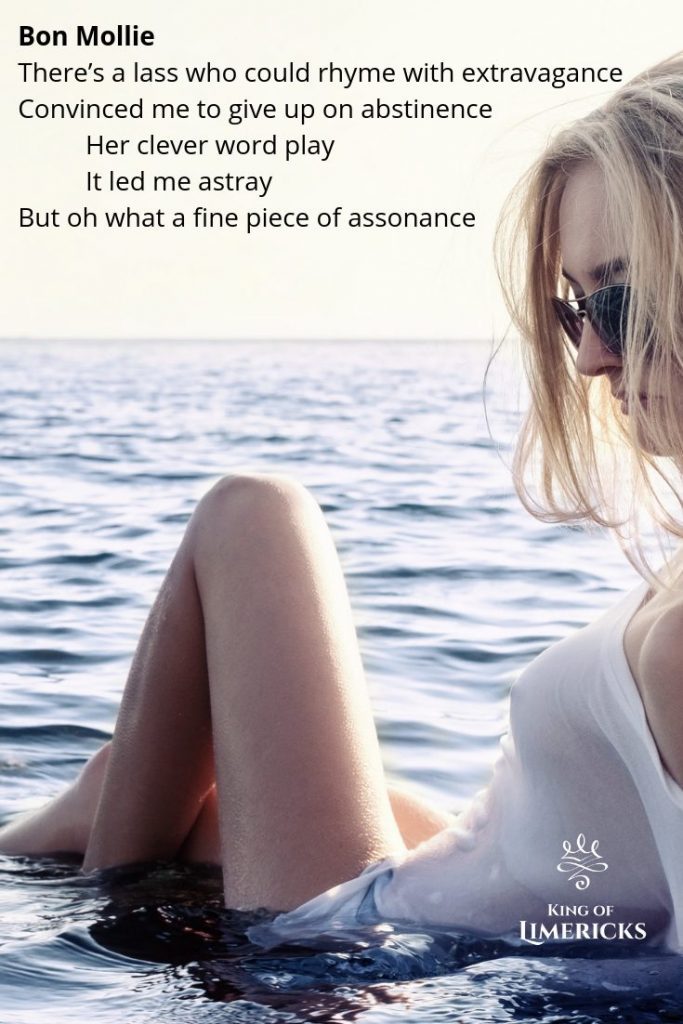


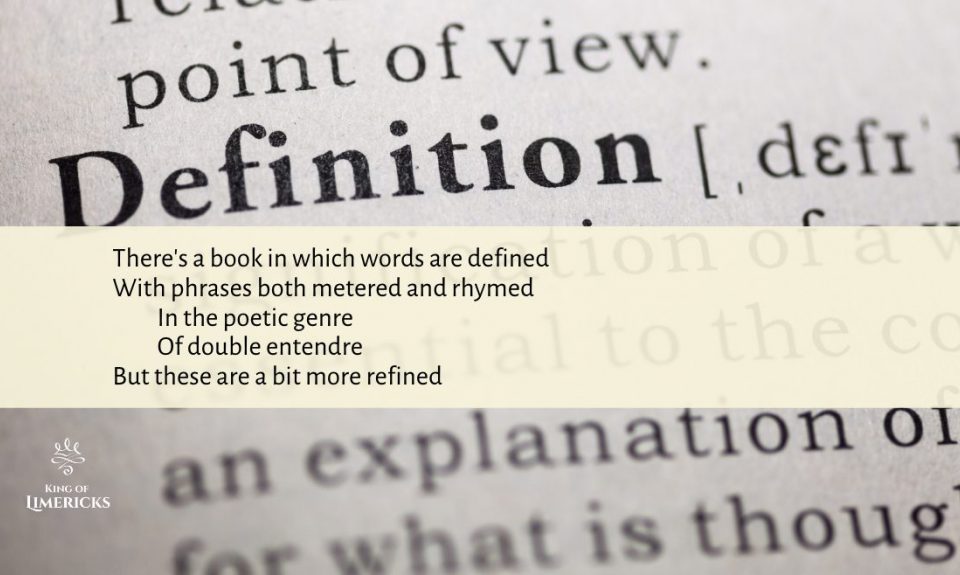
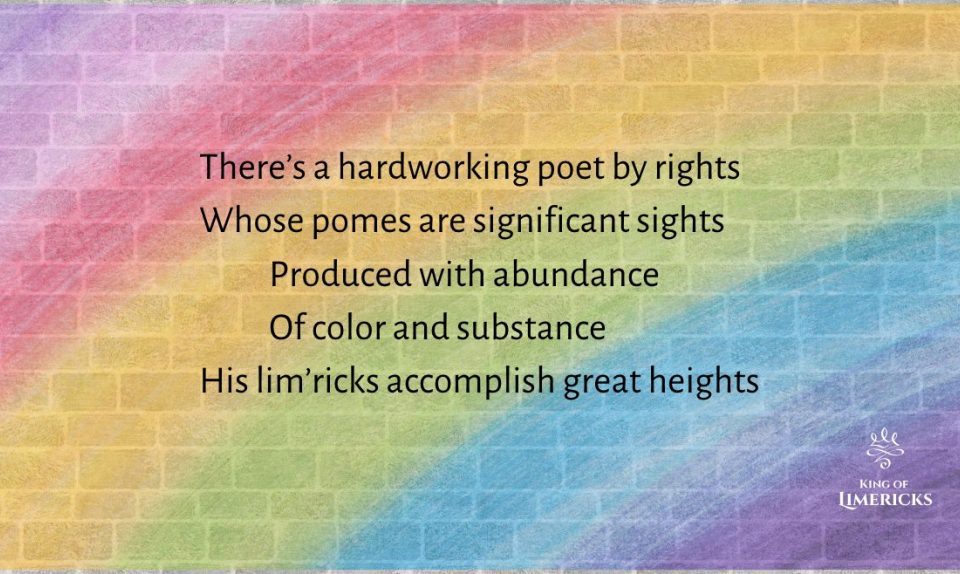
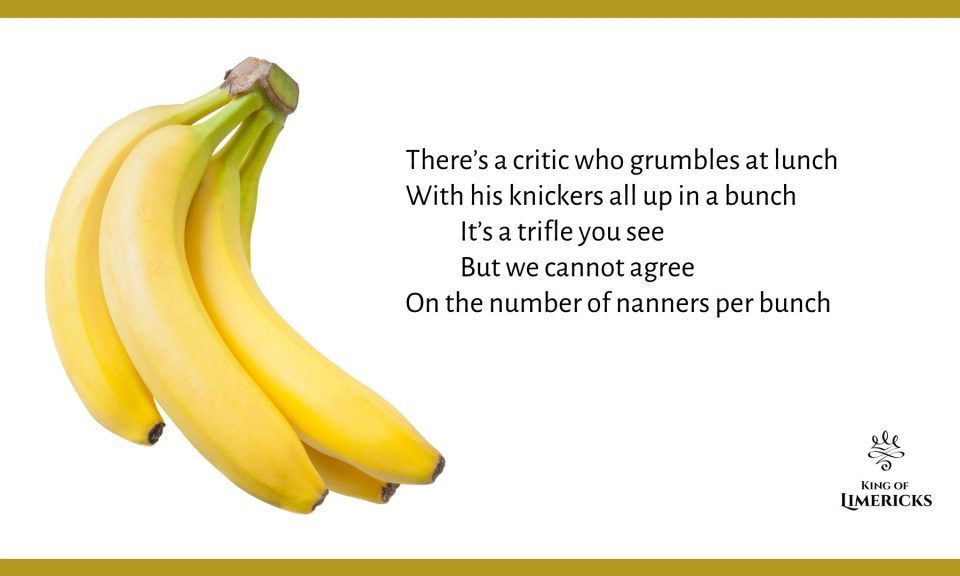
6 Comments
Dear Fred, your second limerick on this page (and a perfect one at that) says it all: “It’s the meter that matters”! As a fellow writer of limericks and holder of probably the largest collection of limerick books in the world (and much other limeribilia), I also have to say that some of your others don’t subscribe to this rule. You write so many (!!!) and with such humour and eloquence that it would be a great pity if any fell out of the genre. I hope you don’t mind me saying! I would be interested to hear if any of your collections of limericks I have read about, have ever gone to print as if so I would like to add them to my collection.
On that note, I shall save the argument about any connection whatsoever with Ireland for another day!
Best wishes,
Doug
Doug Harris
Stockton-on-Tees
UK
Hi Doug, Thank you for the great feedback. I do appreciate your assiduous attention to detail. And I must apologize if ever you find a limerick of mine that stumbles on the meter. At this point, none of my poetry is available in print, but I hope to see something go to press before the end of the year.
A long followed by two shorts is a dactyl. Two shorts followed by a long is anapest.
You’re absolutely right, Bill. I’ve added a clarification to distinguish between dactyls, anapest and amphibrach.
[…] As does this one by Fred Hornaday: […]
[…] As does this one by Fred Hornaday: […]